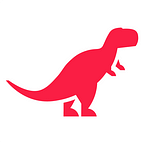The co-founders of RedRex, Andrew and Rick, have known each other for nearly 15 years. It all began when they started working for a startup in Minneapolis. They were employees one and three, helping build the business from $0 to $25M+ in revenue. Along the way, they proposed several product ideas to that company, even developing some prototypes — which the company did not pursue. That’s when they decided to leave and launch their own business ventures.
Together they’ve built multiple tech companies with varying degrees of success. Along the way, they dealt with several “unique” situations; including past employers trying to legally take everything from them. Facing seemingly insurmountable challenges with little optimism at hand, they survived. The struggles they faced have historically broken many wills, but with Andrew and Rick it was confirmation that they were headed in the right direction. Change is not comfortable. Breaking norms makes those in power scared. That’s why they’ve always used a simple question to drive their ideas forward: “What problem are we trying to solve?”.
Recruiting talented people and building strong teams is one of their quiet strengths. To attract and retain “A-players”, they empower everyone they work with to make decisions and exercise their talent. Every person involved is considered a partner, not an employee. Speaking your mind and expressing your opinion is encouraged not penalized (just be ready for questions). One of the principles they manage by is: “we hire great people to tell us what to do, not the other way around.”
With their last start-up, an AI-based solution company, they had fast success. The company closed millions of dollars’ worth of sales within 6 months, but the startup was evolving into a business they didn’t want. There were too many limitations on what they could achieve and fast-revenue was distracting from the vision. So, in March 2020, they sold the company — right as the COVID pandemic and lockdown started. Since they still had a very talented team, and with everyone being forced to work remotely, they decided to create something to make their lives easier: RedRex.
RedRex wasn’t initially intended to be a blockchain-based metaverse. It originally began with solving data fragmentation and having an online social experience more like offline social-life. That’s where the concept of buildings came in. Everyone understands the concept of a building: Buildings have Floors, Floors have Rooms and Rooms have Walls. Once they started turning the concept into a working application, they realized this truly is a platform made of highly versatile “building blocks”. At the same time, Web3 technology was rapidly evolving and developer tools were getting much better. It dawned on them: they had accidentally created a metaverse.
It’s not a metaverse in the sense “Meta” (aka Facebook) wants you to think. Today’s mainstream characterization of the word “metaverse” is that of a fully immersed alternative reality like Ready Player One. The COVID pandemic accelerated the adoption of a remote-based lifestyle where people started depending more on the digital world for their day-to-day life. As we shift to a more digital-first society, people need to access this metaverse with different tools/platforms depending on the context they’re in. For example, it would be pretty hard to drive a car with a VR headset on.
With RedRex, the core thesis is that Virtual/Augmented Reality will be one way to access the metaverse, but not the only way. The metaverse is more of a concept or moment in time, where our online identity begins to rival the importance of our offline identity. It needs to be made for everyday use.
With this philosophy, the first RedRex prototype was built and they started inviting beta users. The response was positive from the very first day. As more people were introduced to RedRex, more potential uses cases were exposed. It was a true idea virus! That was the moment when Andrew and Rick knew they needed some investment capital to make it real. Although there was a lot of institutional and angel investor interest, finding the right investor was challenging. They sought people as genuine as them and the team; people who saw the potential of RedRex. Ultimately, they found the perfect investors who saw the vision and believed in the company culture.
Now that they had seed capital and runway, the RedRex team continued developing the roadmap. Initially, the roadmap was based on a business-to-business (B2B) model. However, after seeing limitless implementation opportunities, they realized RedRex was more of a business-to-consumer (B2C) product with B2B capabilities. That realization caused them to pivot to a blockchain-based social product. Andrew and Rick knew they needed to embrace Web 3.0 and, at the same time, find a way to bridge the gap with those comfortable in Web 2.0. They needed to build a “Web 2.5" (for now). As a result, RedRex is designed to allow early adopters to leverage the benefits of decentralized/blockchain technology while simultaneously allowing everyone else to gradually adopt this new version of the internet.
